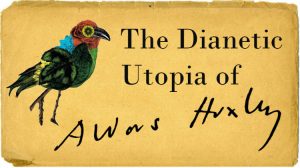
When I woke up this morning in Nashville, I checked, as I routinely do, The Guardian, The New Yorker, and The Times. When I went to the coffee shop next to my apartment, I encountered more people from elsewhere than from here; my best friend is in graduate school in Minneapolis; my father is visiting his family in Chicago; my boyfriend is currently pacing around the living room on his phone with his writing partner in San Diego. On the wall above my desk hang two pieces of art, one by a photographer from Yugoslavia, the other a printmaker from Brooklyn. I just checked the latest post from a great South African blogger; on the coffee table is a book of short stories by a centuries-dead Russian man; and I’m on the couch, on my Macbook, wrapped in a thick, cozy shawl I bought from an elderly street-vendor in Mexico City last Spring.
I don’t know what it means to say I am a Southerner–which, by definition, is a correct label. From where I sit, my world is a complex collage of a vast assortment of influences, cultures, eras and places–making it increasingly difficult to justify the use of such a narrow-sounding term. My surroundings, like many artists and writers I know, reach far beyond what is to be found in this city, this state, and this region.
The regional labeling of art is problematic, as the distinction—in this case “southern”—is increasingly irrelevant, often incorrect, and virtually indefinable as a style or doctrine. As it stands now, artists working in the South no more need to be classified as “southern artists” than surgeons here need to be classified as “southern surgeons.”
We now live in an era of global consciousness, and thus our location is less of limitation, less of a status marker, and less of a factor. Thirty years ago, it meant something to be an artist living in New York. It meant you had exclusive access to current art, writing, and conversation. Now, the landscape has changed and the rules are being re-written; we all have access to art’s cutting edge if want it. Anyone in any town, provided they have a secure internet connection, can subscribe to Hyperallergic, Art News, ArtForum, etc. We can parse the online galleries of the Met and the Louvre and the Uffizi, or order countless contemporary art and theory books, and listen in on two-hour-long Yale art history courses, and can submit their work to galleries around the world. The gates have dissolved in profound ways. While some immutable place-based limitations and perks remain, by and large, a lustrous art-center locale no longer grants any artist a sweeping upper hand.
Regionalism is being pulled at the seams by several factors. Not only is aesthetic culture and style becoming more homogenized (you can find driftwood tables, chevron patterns, and deer antlers on the mantles in homes all across cross this great country), but artists and creative types are getting priced out of art hubs like New York and San Francisco. They’re packing up and moving to smaller, more do-able cities like Nashville or Atlanta. An ever-growing number of artists living and working in the South have moved here from Brooklyn or Boston or London; and in such cases, to impose upon their work some element of “southerness” would be false and far-reaching. On the other hand, many burgeoning talents born in Tennessee have promptly removed themselves in the name of graduate school or other opportunities, and in the process, wholly dismantled their regional descriptor.
Some artists embrace being a “southern artist,” whatever it means to them, often to their detriment. In general, the use of externalized labels, as opposed to those referencing the work’s conceptual or stylistic framework, can constrict and misgovern the artwork as a whole. William Eggleston, one of the most influential photographers of the 20th century, does not identify as a southern artist for this reason, though many may consider him a poster boy for the designation: he was born in the Mississippi Delta, lives in Memphis, and his photographs depict a pointed and distinct view of the American South. However, as Rachel Kushner wrote, “his subject matter extends well beyond a Southern vernacular, and his photographs embody emotive qualities that are not rooted in the colloquial, but seem a unique refraction of the banal and the evocative.” It seems artists aiming to make a global impact would similarly refuse to let the work be restricted by the margins of their geography. That is not to say that one should eschew their background, but rather one should attempt to transcend it and broaden one’s scope and appeal.
It serves to be pointed out the distinction between a southern artist and southern work. The former is watery and problematic; the latter is the stuff of mythology, god-making, or the alluring Southern gothic aesthetic. It is the work made in direct dialogue with the landscape, cultural history, or the political/social constructs of the South; where applying the “southern” label makes sense because it points to the actual substance of the work. A great example of an artist making southern work is photographer Tamara Reynolds, whose recent series “Southern Route” was featured on The New York Times’ Lens Blog. Reynolds makes images that explicitly aim to portray and explore the history, stereotypes, and cultural evolution of the South.
Hovering somewhere in the grey area of this distinction is painter Dane Carder, who was born in Tennessee, has lived and worked here his entire life, and whose paintings depict various scenes and wounded soldiers from the Civil War. When asked if he is a southern artist, he hesitates but eventually says yes. When asked if he makes southern work, he says no—pointing out that his subject matter is a vehicle through which he explores larger themes of death, transience, spirituality, and civil unrest. The work is not necessarily about the Civil War itself.
On the far end of the spectrum might be someone like Vesna Pavlovic, a Serbian-born artist and Vanderbilt professor who has lived in Nashville for over five years and maintains a highly visible and influential role in the Nashville art scene. Her work investigates the technological aspects of photographic history; a recent series investigates the photographic representation of history and collective memory of post-WWII Yugoslavia. Though she is well woven into the fabric of the city’s art consciousness, she is not southern and the American South does not influence her work. On the same note, nationally renowned filmmaker and artist Harmony Korine lives in Nashville and is represented by Gagosian Gallery—to claim he is a southern artist means next to nothing.
Maybe the tendency toward Southernism/regionalism is borne out of the current need for community making amidst the expansive global consciousness. Still it becomes troublesome when we consider the progress in fine art that has been made in the last two centuries–if we are going on the given that it has been “progress”–requires that an artist operate as an individual outside of her community.
For certain traditions like food or agriculture, the idea of preserving and defining what is local is a matter of quality and authenticity. Visual art works in the opposite direction, whereas quality is determined by one’s participation in a broader historical dialogue, not by adhering to a localized tradition.
If we try to define “the art of the South” or try to prove that southern artists have something innately in common, we will continue to come up empty-handed, especially now. The effort itself is naïve, counter-productive, and dismissive of the vast diversity of artists and writers working here. At this point, as an art community, we are competing globally, and our focus should be on building (continuing to build) serious support, opportunities, and infrastructure to help individual artists in the region gain national and international exposure. In that process, there is no need to define or distinguish those great artists living in the South as anything other than hard-working, globally relevant artists.





Roy Tamboli says
You have permanently altered my thoughts about being a “southern artist.”
Great read!
richard heinsohn says
A greatly needed and well written article! Too much labeling and too many pre-conceived notions still deter artists working in the south from fully emerging.
Andy Moerlein says
A well written thought provoker. My western training intersects with am adoration of bonsai, scholars rocks, Japanese gardens. As an Alaska reared New England educated world traveler, my art is a mashup. Donna Dodson and I are discussing these issues and more in a Panel Discussion we host in Boston Oct 2nd. We will link to this essay for sure.